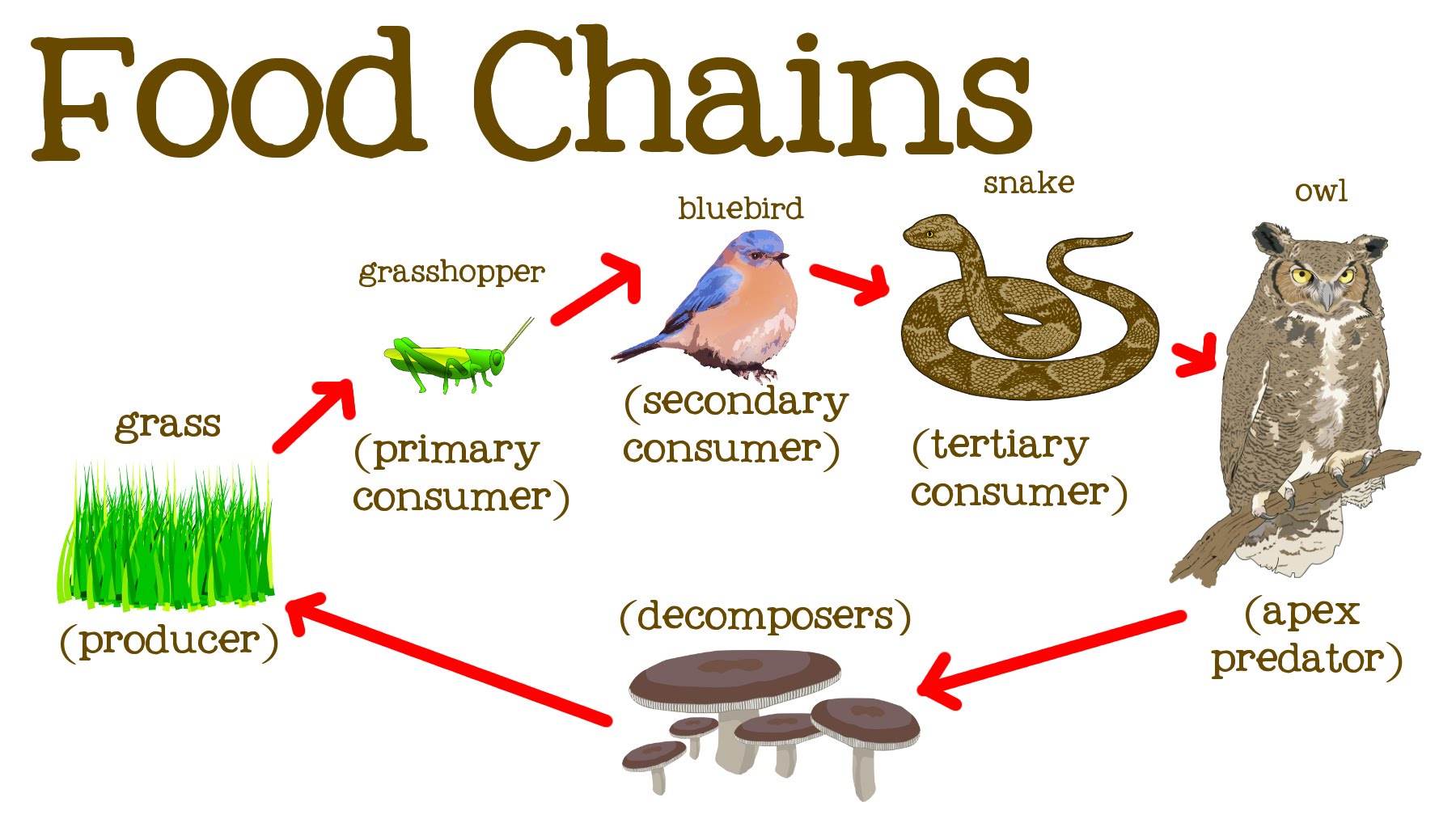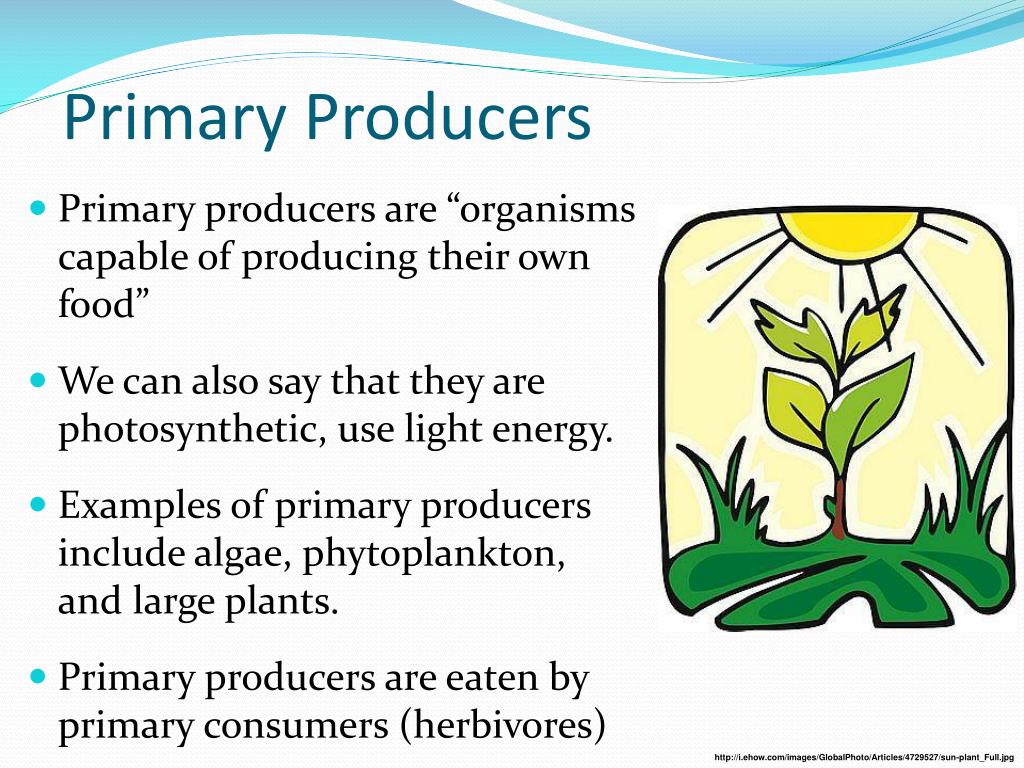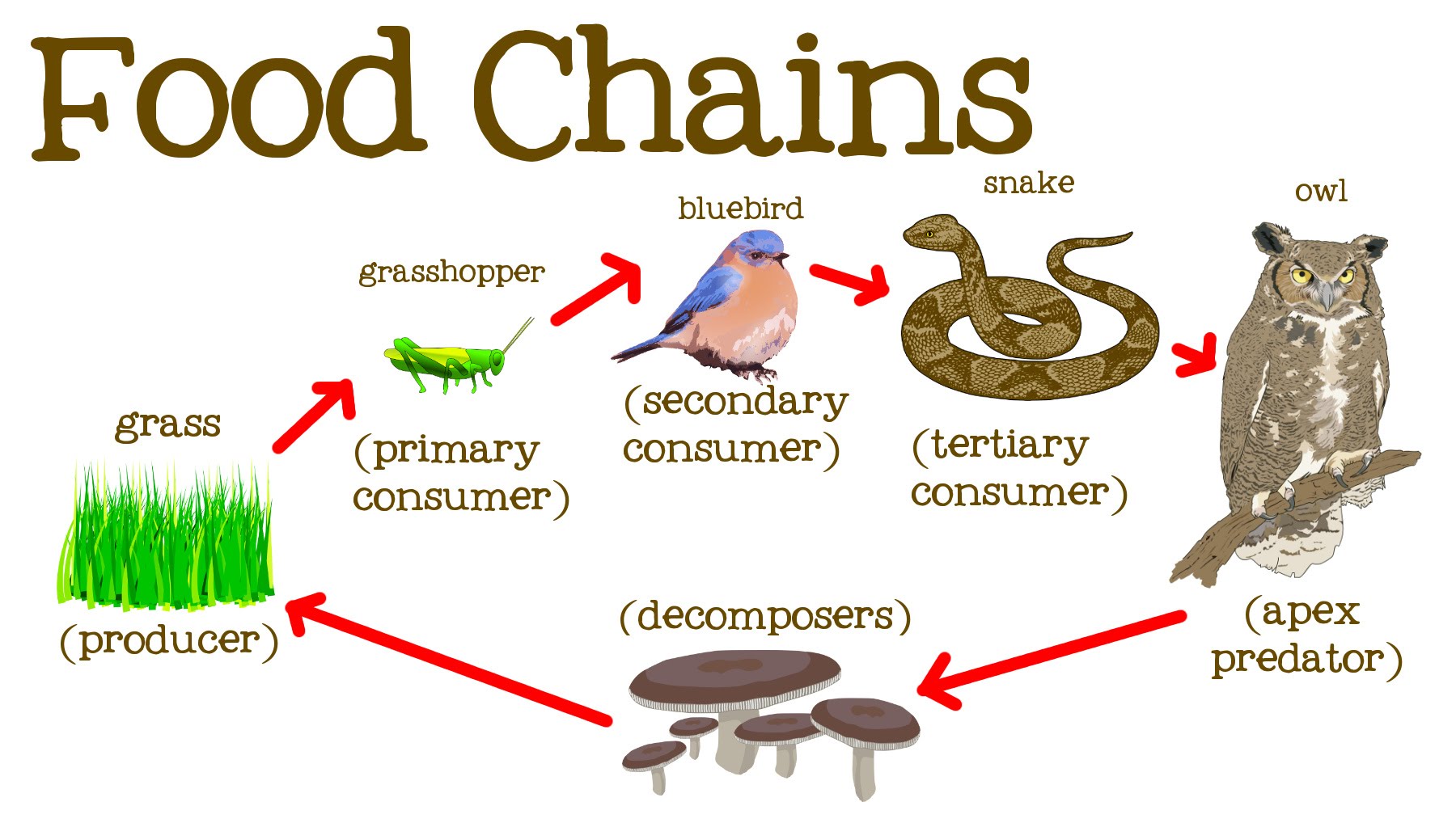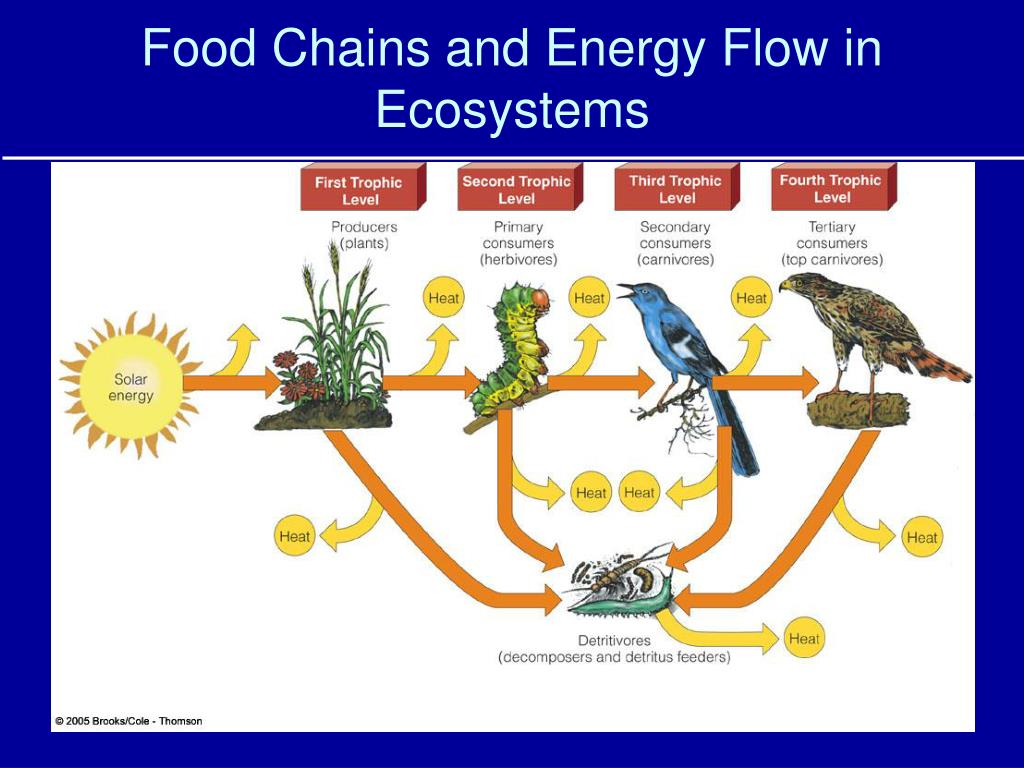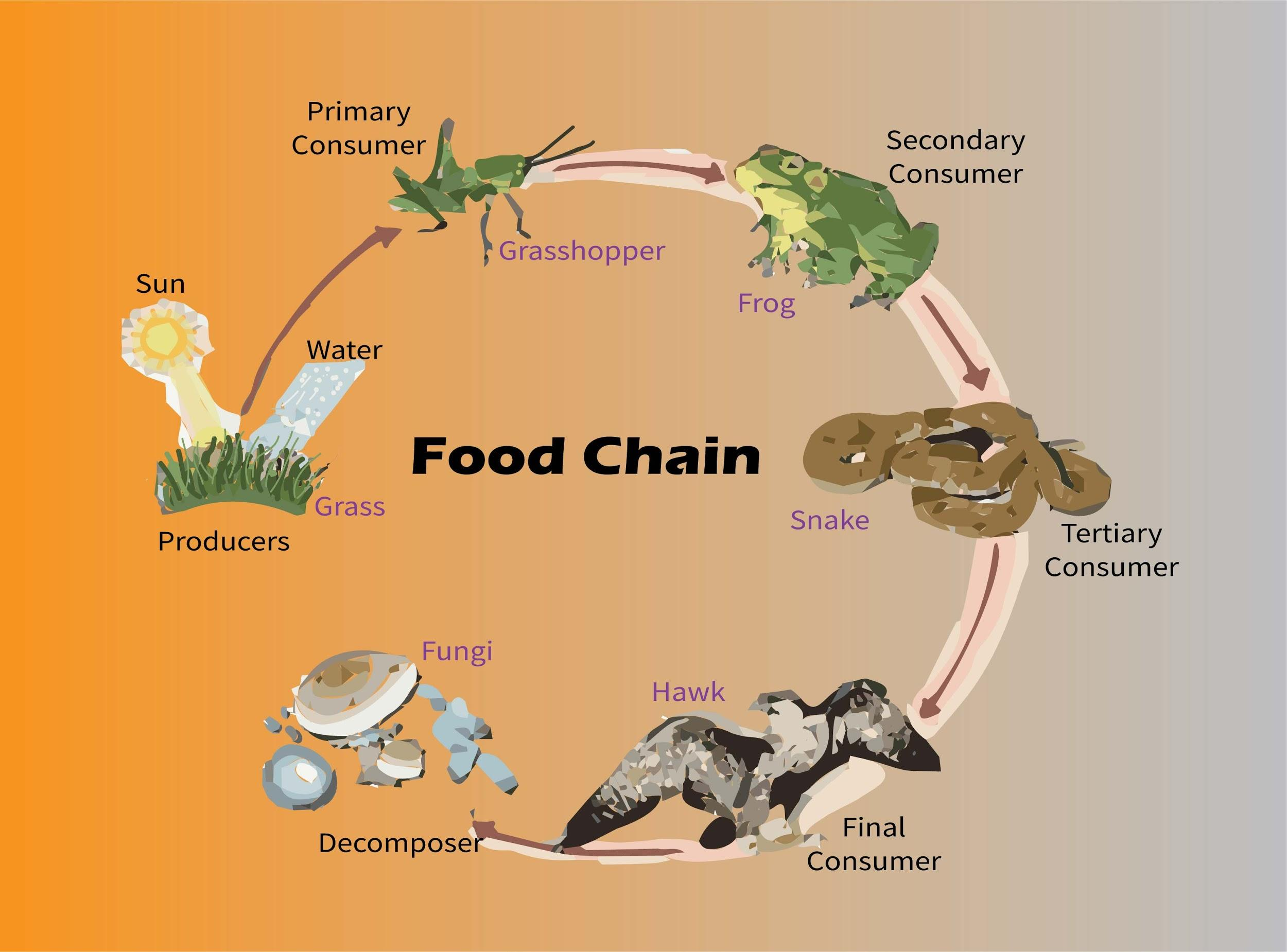Food Chain Presentation
| Introduction to Food Chain | ||
|---|---|---|
| A food chain is a sequence of organisms in which each organism serves as a source of food for the next organism in the chain. It represents the flow of energy and nutrients from one organism to another in an ecosystem. Food chains are an essential part of the balance and functioning of ecosystems. | ||
| 1 | ||
| Components of a Food Chain | ||
|---|---|---|
| Producers: Organisms that can produce their own food through photosynthesis or chemosynthesis, such as plants, algae, and some bacteria. Consumers: Organisms that consume other organisms for energy. They can be further classified into primary, secondary, and tertiary consumers. Decomposers: Organisms that break down dead organisms and organic waste, returning nutrients to the ecosystem. Examples include fungi and bacteria. | ||
| 2 | ||
| Types of Consumers | ||
|---|---|---|
| Primary consumers: Herbivores that feed directly on producers. They obtain energy by consuming plants or algae. Secondary consumers: Carnivores that feed on primary consumers. They obtain energy by consuming herbivores. Tertiary consumers: Carnivores that feed on secondary consumers. They obtain energy by consuming other carnivores. | ||
| 3 | ||
| Energy Flow in Food Chains | ||
|---|---|---|
| Energy flows through a food chain in a unidirectional manner, from the sun (or other energy source) to producers, consumers, and decomposers. Producers convert sunlight into chemical energy through photosynthesis, which is then passed on to primary consumers when they feed on producers. Energy is transferred from one trophic level to another, with some energy being lost as heat at each level. | ||
| 4 | ||
| Food Chain Examples | ||
|---|---|---|
| Example 1: Grass → Grasshopper → Frog → Snake → Hawk. Example 2: Algae → Krill → Penguin → Seal → Killer Whale. Example 3: Trees → Caterpillar → Blue Jay → Hawk. | ||
| 5 | ||
| Interconnectedness of Food Chains | ||
|---|---|---|
| Food chains are interconnected, forming a complex network called a food web. Organisms can occupy multiple trophic levels within a food web, depending on their diet and interactions with other organisms. Changes in one population within a food web can have ripple effects on other populations. | ||
| 6 | ||
| Human Impact on Food Chains | ||
|---|---|---|
| Human activities such as deforestation, pollution, and overfishing can disrupt food chains and lead to imbalances in ecosystems. Loss of habitat and biodiversity can result in the collapse of food chains, affecting the survival of species dependent on them. Sustainable practices and conservation efforts are crucial in maintaining the integrity of food chains and preserving ecosystems. | ||
| 7 | ||
| Conclusion | ||
|---|---|---|
| Food chains are fundamental to the functioning of ecosystems, representing the flow of energy and nutrients between organisms. They illustrate the interdependence of different species within an ecosystem. Understanding and protecting food chains is essential for the conservation of biodiversity and the sustainability of our planet. | ||
| 8 | ||
| References (download PPTX file for details) | ||
|---|---|---|
| Smith, J. (2019). The Importance of Food Chai... National Geographic. (n.d.). Food Chain. Retr... Your third bullet... |  | |
| 9 | ||
